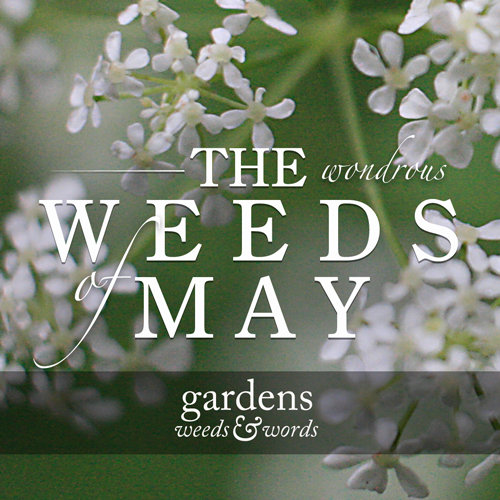This is the month when spring peaks in wave upon wave of exuberant growth, vivid green foliage, frothy white umbels and startling splashes of azure blue. What I find truly remarkable is the reliability with which these characters appear year on year – perhaps this dependability partly explains why, though we may disdain them as weeds, many are no strangers to Chelsea, either in natural or cultivated form.
However, you’ll perhaps be aware that dissing weeds – at least in the ontological sense – is not a pastime in which I habitually partake so, as spring (allegedly) makes way to summer, I’m taking a moment to look back and celebrate some of the wondrous Weeds of May.
The greens
Dog’s mercury
One of the first plants to take advantage of the increase in daylight before the trees are in full leaf, I welcome the sudden appearance of dogs mercury (Mercurialis perennis) in the dappled shade of woodland clearings or the bottom of hedgerows rather as a sign of the season to come, rather than for any intrinsic merits of the plant itself. With tiny greenish white flowers held above long, spear shaped leaves, this member of the spurge family possesses all the disadvantages of euphorbia (poisonous, irritant sap) with none of the aesthetic qualities. The creeping rhizomes make it difficult to eradicate from a bed once it’s arrived – you might think ground elder is a problem, but at least you can eat that. A plant to enjoy in other people’s gardens.
Dog’s mercury, Mercurialis perennis
Goosegrass
...or cleavers, or a host of other names ('Sticky Willy' still being my favourite). One of those weeds everyone loves to hate, except children, who find it rather fun. Actually, I do too, and though it puts on an alarming growth spurt during May, has an annoying habit of snapping off at the threadlike root when you pull it, and likes to break the heads of my alliums when I've left it rather too late to tackle it in the borders, it’s really not the worst weed you could have to deal with. Edible, too, with a host of other benefits, as detailed in this post.
Goosegrass, Gallium aparine
Jack in the hedge
Or garlic mustard (Alliaria petiolata). Looking a bit nettley, albeit filled with liquid kryptonite, you be hard pressed to find a greener weed. In spite of its square stem and toothy, arrow shaped leaves, this is a brassica, rather than a nettle. A pest when introduced to America, no doubt at this very moment Donald Trump is planning to build a wall in order to curtail its movement. More here.
Garlic mustard, Alliaria petiolata
The Blues
Forget-me-nots
Who can resist the low, plump cushions of forget-me-nots that fill out the spaces between tulips in April and May? Not I. Not Bill, either, who loves to eat the leaves. If only I could train him to pull the plants once they've gone over, just at the point where they've given up some of their seed, but before they’ve begun to turn into grey-black tumbleweed. A job for me at the end of the month.
Forget-me-not, Myosotis sylvatica
Alkanet
An arresting blue flower against handsome, green leaves, I’d been merrily referring to this relative of the forget-me-not as ‘borage’ (another family member) for an age before I realised the error of my ways. Petaglottis sempervirens, or green alkanet, can be invasive, but in my mind it merits some garden space, at least until its long stems get flattened by a late May downpour. More here from this blog, and also here on Jane Peronne’s more recent post about the same plant.
Green alkanet, Pentaglottis sempervirens
The frothies and the bells
Cow parsley
Anthriscus sylvestris, made respectable in its purple form 'Ravenswing', is even more delightful to my mind as bog standard cow parsley that billows along verges and hedges until some thug from the council demolishes the lot. At which point the carrot fly that have been using it as a temporary home will all make a bee line (fly line?) for your veg patch. Carrot protection (fleece tunnels, raised beds, smelly alliums) is key. Later in the year we have stately hogweeds (the splendidly named Heracleum sphondylium), and more genteel umbellifers like Ammi majus and Orlaya grandiflora. But there’s nothing quite like the romantic vernal froth you get from a huge swathe of cow parsley in flower.
Cow parsley, Anthriscus sylvestris
Foxgloves
It often amazes me how cavalier people can be about foxgloves, hoiking them out without ceremony and consigning them to the compost or the green bin. But really, rugged colonies of flower spikes four feet tall in purples and whites and creams? If you had to pay six quid a pot for each plant, I imagine they'd be held in higher regard. As for forgoing the charm of watching a fat bumble shouldering her way into the bell of a flower in search of nectar, reversing out moments later – well, you’d have to be daft, wouldn’t you?
Foxgloves, Digitalis purpurea








